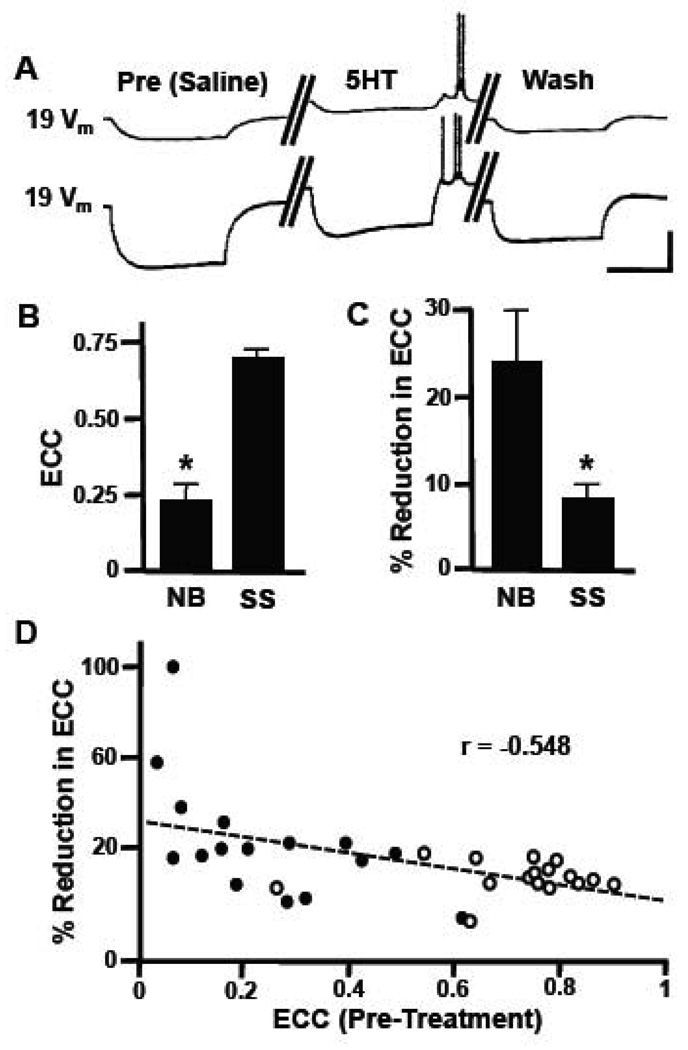Figure 2.
Serotonin-induced reduction in electrical coupling is greatest at weakly coupled electrical synapses in vitro. (A) Representative traces illustrate the modulatory effects of 50 µM serotonin on a 19-19 soma-soma cultured pair. Hyperpolarizing current was injected into one neuron, while changes in membrane potential (Vm) were monitored in both this presynaptic neuron (lower trace) and the postsynaptic neuron (upper trace). Control responses (Pre, Saline) are represented by the set of traces on the left, responses obtained during bath perfusion with 50 µM serotonin (5HT) are in the middle, and post-treatment responses following saline wash (Wash) are shown on the right. (B) Electrical coupling coefficients (ECC) measured between neurite-bearing (NB, n=16) and soma-soma (SS, n=93) pairs of neuron 19 were significantly different (*, p<0.001, 2-tailed t-test). (C) Bath perfusion with 50 µM 5HT caused a greater reduction in electrical coupling coefficient (ECC) in neurite-bearing pairs (NB) than in soma-soma cultures (*, p<0.001, 2-tailed t-test). Data were normalized to pretreatment levels. (D) Linear regression analysis shows an inverse relationship between the 5HT-induced reduction in coupling and initial coupling strength (ECC, Pre-Treatment). The correlation coefficient was statistically significant (r=−0.548; p<0.0005; n=36). SS pairs are indicated by open circles and NB pairs indicated by closed circles. Vertical scale bar in A equals 20 mV and horizontal scale bar equals 2 s.

